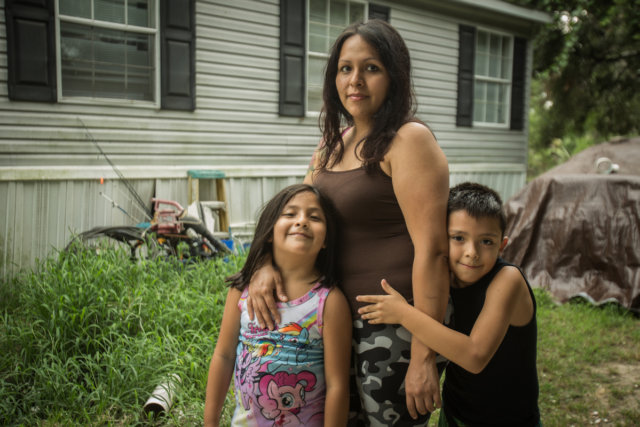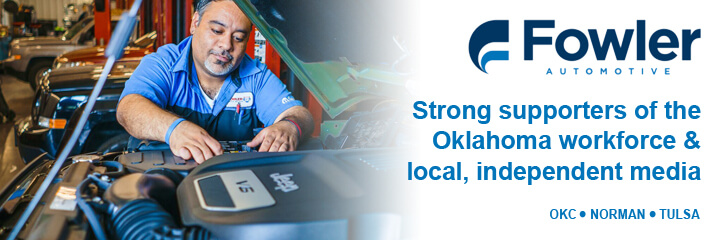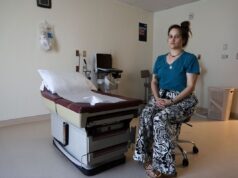

By Bryn Caswell and Fionnuala O’Leary, with contributions from Jenna Miller and Fraser Allan Best
News21
SURRY, Maine – Most of the 43 million Americans who rely on private wells don’t know if their water is safe to drink because unlike the regulation of public water systems, there is no government monitoring of wells.
The responsibility lies with owners, many of whom never test their wells because of cost, disinterest and a lack of knowledge about what could be in groundwater. Yet their wells could be contaminated by substances such as arsenic or uranium from bedrock, nitrate and manure runoff from farming, or human waste from the well owners’ own septic systems.
Water quality experts Leslie DeSimone and Bruce Lindsey of the U.S. Geological Survey’s National Water-Quality Assessment Program told News21 that the water in millions of wells is likely to be contaminated. In 2009, DeSimone conducted a study for the USGS and found that 23 percent of surveyed private wells were contaminated. She said these figures remain “reasonably representative.” Lindsey added that “it’s more likely that (groundwater) concentrations are moving slightly higher.”
“National figures like 23 percent mask the fact that some places are better than that and others are worse,” Lindsey said. “Especially for private well owners, the responsibility is almost always on them to test and treat their water, which many don’t do.”
Jane Disney of Maine’s MDI Biological Laboratory agreed that getting people to test their wells is an “unending challenge” in high-risk areas, where they could be drinking anything from bovine feces to arsenic.
“We won’t let parents bring a baby home from the hospital unless there’s a car seat in the car, but you can take a child home to contaminated well water,” Disney said. “People either need to see an economic crisis or a public health crisis or something that they can point to before they take action.”
Mike Miltner, a carpenter who lives with his wife and two children in rural Surry, told News21 that he knows their well contains naturally occurring arsenic and radon. But he said they cannot afford to spend “anywhere from between $5,000 to $10,000” on a well filtration system.
In the remote picturesque town of Derby in Orleans County, Vermont, Annette Vallieres and her 3-year-old son are reliant on a private well they know nothing about.
“There’s really no access for free water kits,” Vallieres said. “Especially up here. I don’t even know what I would do to find out if there was anything in it.”
Many Americans who get their drinking water from private wells also dispose of their human waste in septic systems on their property. Only seven states regularly monitor septic systems after installation. When septic systems fail, sewage can back up into homes, flood backyards and sink to the base of wells, contaminating drinking water.
“Personally, I’m concerned,” said Zachary Lowenstein, an environmental scientist with the Environmental Protection Agency. “We need that data to talk about what the concern is and where in the country we may or may not have a strong septic population. So it’s really just a big data gap right now.”
In urban Wake County, North Carolina, construction worker Nelson Diaz believes the overflowing septic system for his ranch-style home is contaminating his well water. “What I do now is put a pump in my septic and pump the water out” onto the backyard far away from the house, he said. “It’s no good, you know. But what can I do? I can do nothing. I drink bottled water,” Diaz said. “You can never trust what comes up from the ground now.”
“In areas where proper wastewater treatment is rare, regulation is not enforced because a lot of people just can’t afford to get a system that works,” said Mark Elliott, a civil engineer and researcher at the University of Alabama. In the South in particular, he added, “Many of them are living in conditions similar to before outhouses came in 120 years ago.”
In Wilcox County, Alabama, the health department must issue a permit for a septic system to be installed. Yet, according to Elliott, who was part of a team that conducted a 2016 survey of 289 dwellings in Wilcox County, 270 had unpermitted septic systems with 60 percent using straight pipes for wastewater disposal. A straight pipe is a narrow tube that drains wastewater from a broken septic system directly into a yard. This sharply increases the risk of well water contamination and gastrointestinal illnesses.
“It’s probably the worst area you could be in because a lot of them don’t have any inspections or anything,” said Friday James, a Wilcox County resident. “It’s the worst area. They can get away with it.”
“I’d rather drink water of the creek than drink the water from here,” Leslie Bean said of his community in Wilcox.
Although rural areas generally have a high rate of domestic well use, the numbers vary. In New Hampshire, more than 46 percent of people rely on wells compared to 17 percent in West Virginia and just 6 percent in South Dakota, according to a national sampling of states by News21.
In New England, 55 percent of people in Vermont and 57 percent in Maine have domestic wells. Wells in many of the small towns dotting the Maine coast have high levels of arsenic. Maine is famous for its granite, but this rock leeches invisible poison into the groundwater. In the small town of Surry, over 50 percent of tested wells exceeded the federal limit, with 23 percent more than 10 times this limit.
Emily Fleisher-Beach built her house on Morgan Bay Road in Surry in 1987. She has discovered naturally occurring arsenic levels six times above what is considered safe to drink in her well water. But she couldn’t afford to do anything about it.
Fleisher-Beach was drinking the arsenic water for 20 years before testing the well. After testing, she and her husband “hauled water from town” or from friends with city water, which she admitted “was getting to be pretty difficult.” In 2016, they installed a “sturdier” filtration system to replace the smaller one on their sink. They still test the water every six months to ensure the filter is working.
Boatmaker Sandi Sinclair, who lives nearby in a cobalt blue house with her husband, Vaughn, initially tried a $5,000 reverse osmosis system to filter the arsenic out of the water from their well. It costs $1,000 a month to maintain, which wasn’t financially viable for the Sinclairs. So they have been buying bottled for about 15 years. She said they had to sell their beloved American quarter horse named Question Me because they couldn’t afford bottled water for it.
“You’d be better off to drink out of a mud puddle than you would out of our well,” Sandi Sinclair said.
In addition to filtration systems for wells, home septic systems can be expensive. New systems cost between $2,000 and $10,000. Fixing pipes and tanks as they age can cost more. Altogether, this can create an insurmountable financial burden for low-income families. And maintaining a working septic system is especially difficult for families in places with poor soil conditions and insufficient drainage.
On Hilton Head Island in South Carolina, some low-income families live with pools of sewage in their yards because poor soil conditions on the resort island cannot support septic systems. There is too much drainage in some wetland areas and not enough in sandy soils. The quality of life differs significantly from the island’s sewered, modern gated communities to the low-income areas that use septic systems.
Lester Young lives with his disabled wife on Campbell Drive, where public sewer lines are just out of reach at the end of the street.
Young said Hilton Head Public Service District told him that his house was too far from a lift station – a tank used to elevate and grind wastewater – to connect. So, Young is still reliant on a private septic.
“I hope they come back here because I’m in trouble now,” he told News21. “I’ve tried to pump that thing (out) two times this month.”
Young says he is too “old to be bending down and pumping” when his septic system backs up every two weeks. The native islander is hoping to link into the sewer mains on Oakview Road, but he says progress is slow on Hilton Head.
“It’s hard on me because I’ve had surgery on my back,” Young said, pulling back the tarp in his backyard to reveal a clotted hole in the ground.
A few minutes away, Denise Hernandez and her family rent a medium-sized mobile home off Spanish Wells Road. Hernandez, 24, tries to keep the trailer clean, but the smell of human waste is pungent.
Often, there is severe clogging when the septic system backs up and pools of feces appear outside.
“My husband would see little bugs,” she added, gesturing toward the brown puddle outside her front door. “He tried stuff in order for it to not get worse. He put that whole bottle of paint thinner in there.”
There is a project underway on Hilton Head called Sewer Access For Everyone, or SAFE. This is a collaborative effort by the town of Hilton Head, the Community Foundation of the Lowcountry and the Public Service District. It aims to connect all residents to public sewer by 2020.
However, PSD General Manager Pete Nardi acknowledged that SAFE “won’t sewer everything on the island” immediately. News21 encountered many low-income residents such as Young and Hernandez who are still living in septic squalor and in a three- to four-year backlog.
“Now we’re actually trying to move because there’s too much problems,” said Hernandez. “It’s too expensive to be living in a place where you get home and the first thing you smell when you get out of the car is the sewer.”
Jesse Jerabek and his family are also considering moving from their home in Kewaunee County, Wisconsin. The Jerabeks’ well water exceeded the recommended level of nitrates in a past test. Like Hernandez, Jerabek now fears for his family’s health.
“Unfortunately people still don’t test their water in this area,” Jerabek said. They’re afraid to test it. They don’t want the stigma of having a bad well.”
“If we could take our house and move it, we do it in a heartbeat. Water is so important to us, I don’t want to jeopardize my kids’ future.”





















